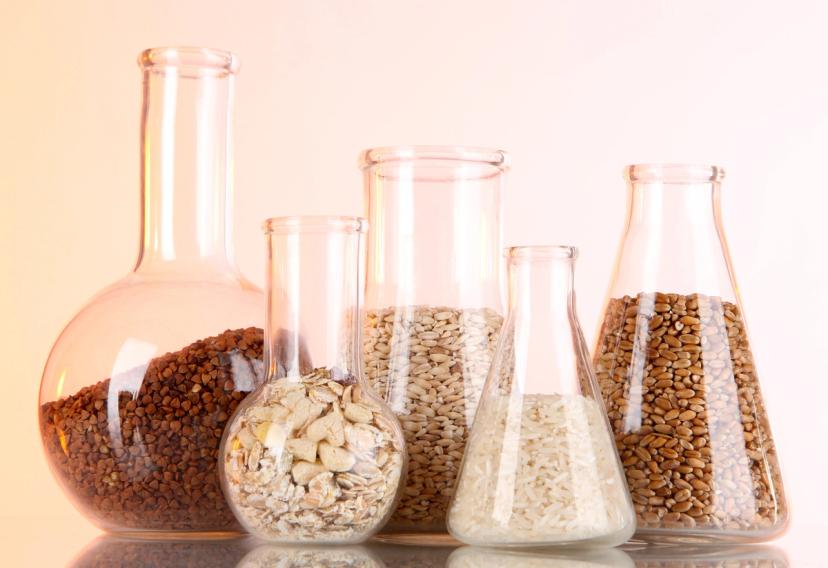Dr Pam Doolittle on the Importance of Mycotoxin Analysis
Learn about the instruments Dr Doolittle utilizes in the laboratory to analyze mycotoxins
10 May 2015

Advances in mycotoxin analysis can ensure food safety in foods such as grains, wheat and spices About Dr P. Doolittle

Dr Pam Doolittle's responsibilities include directing all aspects of the lab operations for undergraduate courses in the analytical sciences division and overseeing more than 700 students per year. Dr Doolittle provides instructional leadership, writes curriculum and grant proposals, oversees program planning and implementation, and manages the training of Teaching Assistants. In addition, she serves as direct manager for stockroom staff, and oversees stockroom budgets and inventory, as well as mentoring and supervising undergraduate independent research projects.
The Director of Analytical Sciences Undergraduate laboratories at the University of Wisconsin-Madison discusses the importance of mycotoxin analysis and the types of instruments utilized in the laboratories for these applications.
The dangers of mycotoxins
Q: What are mycotoxins and why are they so dangerous?
A: Mycotoxins are byproducts of naturally occurring molds that grow on common food sources. They persist in stored food sources, such as grains or hay used for livestock feed, and wheat cereals and spices that have stored for lengthy periods of time in warehouses or your kitchen cupboard. Examples of mycotoxins include deoxynivalenol and aflatoxin, both of which endure even high-temperature food processing procedures to persist in food sources. Mycotoxins are a world food safety issue that can cause mycotoxicoses in mammals, including humans. More than 25% of the world’s crops are impacted by natural occurring molds.
Q: Please describe a current project you are researching.
A: My job here primarily functions under the educational mission of the University of Wisconsin, Madison. The most important function of my job is to train undergraduates in techniques/GLP important to an analytical chemist. Along with this technical training, an equally important goal is to nurture students towards thinking critically yet creatively about a chemistry or chemical measurement problem, with the hope they will carry their training out into the world and do great things for the future. Undergraduate research opportunities on the campus are probably one of the best ways we can make this kind of impact on our undergraduate students. While supervising these undergraduate researchers is not one of my primary duties, I do end up mentoring anywhere from one to three students per semester. I use their help to develop experiments for our large analytical chemistry lab courses, using a guided-inquiry experiment approach.
Fostering collaborations with industry is one way I’ve worked to build a bridge for the students I mentor, which connects their experience in an instructional setting with real-world and current applications happening in industry. The work we’ve published on mycotoxins resulted from a productive collaboration with Horizon Technology, Shimadzu Corporation and Supelco, with other supplies contributed by Sigma Aldrich. The undergraduate I supervised worked directly with scientists and technicians from these companies to characterize a new instrument developed by Horizon Technology that largely automates the front-end preparation of samples.
My desired outcome of this collaboration was to develop experiments more broadly for our undergraduates, which illustrate concepts and techniques important to the front-end preparation of samples for analysis in general. Using the global health impact of mycotoxins for context, we’re currently working on developing experiments illustrating techniques such as liquid-liquid and solid phase extraction and derivation of samples, all for delivery on to an HPLC instrument.
SPE is an efficient and versatile way to perform sample cleanup as well as concentration, buffer exchange and filtration
Dr. Pam Doolittle The University of Wisconsin-Madison
The benefits of Solid Phase Extraction
Q: What are the key benefits of SPE over other techniques?
A: SPE is an efficient and versatile way to perform sample cleanup as well as concentration, buffer exchange and filtration. It’s a fairly green process, since the amount of organic solvent and waste is decreased. It has tunable selectivity determined by your choices of phase, pH and solvent. It’s efficient since you can perform steps in parallel (versus liquid-liquid extraction methods that require procedures performed in series). In the way we’ve implemented in our labs using Horizon’s SmartPrep instrument, the samples are very clean, which improves our sensitivity for ID and quantitation. Our published results show that using automation of SPE we developed for the SmartPrep Extractor made by Horizon Technology, we not only realized time savings compared to traditional SPE methods, but also the samples are cleaner, which means an increase in our sensitivity for ID and quantitation.
Q: What do you envisage for the future of this research?
A: I’m currently supervising two students dedicated to this project. We are exploring ways to illustrate how choices of stationary phase, solvents, pH and temperature impact the quantitative and qualitative measurements on the HPLC. We’re hoping to develop this for use in our chem 327 course (Fundamentals of Analytical Sciences) for implementation later this spring.
